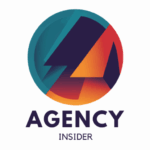"AI doesn’t replace creativity—it removes the bottlenecks that hold it back."
TLDR
The creative industry is at a crossroads. AI tools promise faster production and lower costs, but many agencies fear sacrificing quality and losing their creative edge. This guide provides a proven framework for integrating AI into your creative process that actually enhances quality while dramatically increasing speed.
Key Takeaways:
- AI should augment human creativity, not replace it
- Quality control mechanisms are essential at every integration point
- Team training and client communication are critical for successful adoption
- The right framework can increase creative output by 300% while maintaining brand integrity
- Early adopters are already gaining significant competitive advantages
Implementation Timeline: 30-60 days for basic integration, 90 days for full optimization
The Creative Quality Crisis
Let’s address the elephant in the room: most agencies are terrified that AI will turn their creative work into generic, soulless content. And honestly? That fear is justified if you’re doing it wrong.
The reality is that AI tools are already being used by your competitors. While you’re debating whether to embrace AI, other agencies are quietly using it to:
- Produce 5x more creative concepts in the same timeframe
- Reduce revision cycles from weeks to days
- Free up senior creatives for strategic thinking
- Deliver consistent quality across all projects
But here’s what separates the winners from the losers: the framework.
Agencies that succeed with AI don’t just throw ChatGPT at their creative briefs and hope for the best. They build systematic processes that leverage AI’s strengths while maintaining human oversight at critical quality checkpoints.
The AI-Enhanced Creative Framework
Phase 1: Creative Process Mapping
Before integrating any AI tools, you need to understand your current creative process inside and out. Most agencies operate on intuition and experience, but AI integration requires systematic thinking.
Step 1: Document Your Current Workflow
Map out every step of your creative process from brief to delivery:
- Brief analysis and interpretation
- Research and inspiration gathering
- Concept development and ideation
- Initial creative execution
- Internal review and refinement
- Client presentation and feedback
- Revision cycles
- Final production and delivery
Step 2: Identify AI Integration Points
Not every step benefits from AI enhancement. Focus on these high-impact areas:
Research and Inspiration (High Impact)
- Market research and competitor analysis
- Trend identification and cultural insights
- Reference gathering and mood board creation
- Audience behavior analysis
Concept Development (Medium Impact)
- Initial brainstorming and idea generation
- Concept variations and alternatives
- Copy ideation and headline generation
- Visual concept exploration
Execution and Production (High Impact)
- Asset creation and manipulation
- Copy refinement and optimization
- Design variations and A/B testing
- Technical implementation support
Quality Assurance (Critical)
- Brand guideline compliance checking
- Consistency verification across touchpoints
- Performance prediction and optimization
- Error detection and correction
Phase 2: Quality Control Mechanisms
This is where most agencies fail. They integrate AI without building proper quality controls, leading to inconsistent output and brand disasters.
The Three-Layer Quality System
Layer 1: AI Prompt Engineering and Training Your AI is only as good as your inputs. Develop standardized prompt libraries that include:
- Brand voice and tone specifications
- Visual style guidelines and references
- Target audience characteristics
- Project-specific requirements and constraints
- Quality benchmarks and success criteria
Layer 2: Human Creative Oversight Assign specific roles for AI-enhanced projects:
- Creative Director: Strategic oversight and brand integrity
- AI Specialist: Tool optimization and prompt refinement
- Quality Controller: Consistency checking and error detection
- Client Liaison: Communication and expectation management
Layer 3: Systematic Review Checkpoints Build mandatory review points into your process:
- Concept Review: Does the AI output align with creative strategy?
- Brand Review: Is the output consistent with brand guidelines?
- Quality Review: Does the output meet technical and aesthetic standards?
- Client Review: Will the client understand and approve the AI involvement?
Phase 3: Team Training and Adoption
The biggest barrier to AI adoption isn’t technical—it’s human. Your team needs to understand that AI is a creative amplifier, not a replacement.
The Four-Week Training Program
Week 1: AI Literacy and Mindset
- Understanding AI capabilities and limitations
- Identifying opportunities vs. threats
- Hands-on experimentation with basic tools
- Setting realistic expectations and goals
Week 2: Tool Mastery
- Deep dive into selected AI tools
- Prompt engineering best practices
- Integration with existing software workflows
- Quality control techniques and checkpoints
Week 3: Process Integration
- Mapping AI tools to specific project types
- Developing team workflows and handoffs
- Creating quality control checklists
- Establishing communication protocols
Week 4: Advanced Techniques and Optimization
- Advanced prompt engineering strategies
- Custom AI training and fine-tuning
- Performance measurement and optimization
- Troubleshooting common issues and problems
Overcoming Resistance
Address common concerns directly:
- “AI will replace me”: Position AI as a creative amplifier that frees up time for strategic thinking
- “Quality will suffer”: Show examples of AI-enhanced work that exceeds traditional quality
- “Clients won’t accept it”: Demonstrate how AI enables better results, not cheaper shortcuts
- “It’s too complicated”: Start with simple use cases and build complexity gradually
Phase 4: Client Communication Strategy
Transparency builds trust. Hiding AI usage creates liability. Smart agencies are proactive about AI communication.
The Three-Tier Communication Approach
Tier 1: AI-Aware Clients (30% of clients) These clients understand and appreciate AI enhancement:
- Lead with AI capabilities as a competitive advantage
- Show how AI enables better results and faster delivery
- Provide detailed explanations of AI integration points
- Offer AI strategy consulting as an additional service
Tier 2: AI-Curious Clients (50% of clients) These clients are interested but cautious:
- Focus on results and benefits, not technical details
- Use before/after examples to demonstrate value
- Address concerns about quality and authenticity
- Gradually introduce more AI-enhanced services
Tier 3: AI-Resistant Clients (20% of clients) These clients prefer traditional approaches:
- Use AI behind the scenes for efficiency gains
- Focus on human creativity and strategic thinking
- Gradually introduce AI concepts through education
- Respect their preferences while maintaining competitive pricing
Communication Templates
For Proposals: “Our creative process combines human strategic thinking with AI-enhanced execution to deliver exceptional results faster and more efficiently. This allows us to explore more creative directions, iterate more quickly, and focus our human expertise on the strategic and conceptual work that drives real business results.”
For Project Updates: “We’re using AI tools to accelerate our research and initial concept development, which means we can present you with more refined ideas and faster turnaround times. All creative strategy and final quality control remains under human oversight to ensure brand integrity and strategic alignment.”
For Concerns: “AI doesn’t replace our creative thinking—it amplifies it. Think of it like a photographer using digital tools instead of film. The creative vision, composition, and artistic direction still come from human expertise, but the tools allow for better results and more efficient execution.”
Implementation Case Studies
Case Study 1: Mid-Size Agency (15 employees)
Challenge: Struggling to compete with larger agencies on speed and volume while maintaining quality.
Implementation:
- Integrated AI into research and initial concept phases
- Trained 3 team members as AI specialists
- Developed standardized prompt libraries for major clients
- Implemented 3-layer quality control system
Results:
- 250% increase in concept variations per project
- 40% reduction in time from brief to first presentation
- 15% increase in client satisfaction scores
- 25% increase in project profitability
Key Success Factors:
- Started with low-risk projects to build confidence
- Invested heavily in team training and buy-in
- Maintained strict quality controls throughout
- Communicated benefits clearly to clients
Case Study 2: Boutique Creative Shop (6 employees)
Challenge: Limited resources and capacity preventing growth and new client acquisition.
Implementation:
- Used AI for research, copywriting, and initial visual concepts
- Positioned AI enhancement as premium service offering
- Developed AI-specific service packages
- Created transparent client communication strategy
Results:
- 300% increase in project capacity without hiring
- 50% reduction in revision cycles
- 30% increase in average project value
- 2 new major client acquisitions based on AI capabilities
Key Success Factors:
- Focused on AI as competitive advantage, not cost reduction
- Maintained human oversight for all strategic decisions
- Invested in advanced AI tools and training
- Built AI expertise into core service offerings
Case Study 3: Large Agency Network (200+ employees)
Challenge: Inconsistent quality across teams and offices, pressure to reduce costs while maintaining standards.
Implementation:
- Developed enterprise-wide AI standards and guidelines
- Created centralized AI training and certification program
- Built custom AI tools integrated with existing workflows
- Established AI centers of excellence in each office
Results:
- 35% improvement in cross-team consistency
- 20% reduction in production costs
- 45% faster time-to-market for new campaigns
- 60% reduction in junior-level revision work
Key Success Factors:
- Executive-level commitment to AI transformation
- Significant investment in custom tool development
- Comprehensive change management program
- Clear metrics and accountability systems
The AI Creative Toolkit
Essential AI Tools for Creative Agencies
Research and Strategy
- Claude/ChatGPT: Market research, audience analysis, strategic planning
- Perplexity: Real-time research and fact-checking
- Brandwatch: Social listening and trend analysis
- Custom GPTs: Brand-specific research and analysis tools
Copywriting and Content
- Custom language models: Brand-specific voice and tone
- ChatGPT (adjusted for Voice)
- Claude In my opinion, Claude is the best writer
Visual Creative
- Midjourney: Concept visualization and mood boards
- DALL-E: Specific asset creation and manipulation
- Runway: Video concept development and editing
- Adobe Firefly: Integrated creative suite enhancement
Production and Optimization
- Figma AI: Design system automation and consistency
- Canva AI: Template creation and brand compliance
- Zapier: Workflow automation and integration
- Custom APIs: Proprietary tool integration and optimization
Building Your AI Stack
Phase 1: Foundation (Month 1) Start with these essential tools:
- ChatGPT Plus or Claude Pro for research and strategy
- One visual AI tool (Midjourney or DALL-E)
- One copywriting AI tool (Copy.ai or Jasper)
- Basic automation tools (Zapier or similar)
Phase 2: Expansion (Months 2-3) Add specialized tools based on your needs:
- Industry-specific research tools
- Advanced visual creation tools
- Video and motion graphics AI
- Custom integrations with existing software
Phase 3: Optimization (Months 4-6) Develop custom solutions:
- Brand-specific AI models and prompts
- Automated quality control systems
- Client-facing AI tools and dashboards
- Performance measurement and optimization tools
Measuring Success: KPIs for AI-Enhanced Creative
Efficiency Metrics
- Time to First Concept: Target 50% reduction
- Revision Cycles: Target 30% reduction
- Project Completion Time: Target 25% improvement
- Resource Utilization: Target 40% increase in output per person
Quality Metrics
- Client Satisfaction Scores: Maintain or improve current levels
- Brand Compliance Rate: Target 95%+ consistency
- Error Rate: Target 50% reduction in production errors
- Award Recognition: Maintain or improve creative recognition
Business Metrics
- Project Profitability: Target 20% improvement
- Client Retention: Maintain or improve current rates
- New Business Win Rate: Target 15% improvement
- Team Satisfaction: Monitor and maintain high levels
Innovation Metrics
- Concept Variety: Measure increase in creative options presented
- Speed to Market: Track improvement in campaign launch times
- Competitive Advantage: Monitor market position and differentiation
- Future Readiness: Assess team AI literacy and capability growth
Common Pitfalls and How to Avoid Them
Pitfall 1: Over-Reliance on AI
The Problem: Letting AI drive creative decisions instead of informing them. The Solution: Maintain human oversight at all strategic decision points. AI should enhance human creativity, not replace it.
Pitfall 2: Inadequate Quality Control
The Problem: Rushing AI-generated content to clients without proper review. The Solution: Implement mandatory quality checkpoints and never skip human review for client-facing work.
Pitfall 3: Poor Team Buy-In
The Problem: Forcing AI adoption without addressing team concerns and resistance. The Solution: Invest in comprehensive training and change management. Address fears directly and demonstrate value clearly.
Pitfall 4: Client Communication Failures
The Problem: Surprising clients with AI usage or being dishonest about implementation. The Solution: Develop clear communication strategies and be transparent about AI enhancement from the beginning.
Pitfall 5: Tool Overload
The Problem: Adopting too many AI tools too quickly, creating confusion and inefficiency. The Solution: Start with essential tools and expand gradually based on proven value and team capability.
The Future of AI-Enhanced Creative
What’s Coming Next
Advanced Personalization AI will enable real-time creative personalization at scale, allowing agencies to create thousands of variations for different audiences automatically.
Predictive Creative Performance AI models will predict creative performance before launch, enabling data-driven creative decisions and reducing campaign risk.
Seamless Human-AI Collaboration New interfaces will make AI collaboration as natural as working with a human team member, with AI understanding context and creative intent.
Real-Time Creative Optimization AI will continuously optimize creative assets based on performance data, automatically improving campaigns while they run.
Preparing for the Future
Invest in AI Literacy Make AI education a core part of your team development. The agencies that understand AI deeply will have significant advantages.
Build Flexible Systems Design your AI integration to be modular and adaptable. New tools and capabilities are emerging rapidly.
Develop Proprietary Advantages Create custom AI solutions and datasets that give you unique competitive advantages in your market.
Maintain Human-Centric Values Remember that creativity is fundamentally human. AI should amplify human creativity, not replace the human elements that make great creative work.
Getting Started: Your 30-Day Action Plan
Week 1: Assessment and Planning
- Day 1-2: Map your current creative process
- Day 3-4: Identify AI integration opportunities
- Day 5-7: Research and select initial AI tools
Week 2: Tool Setup and Training
- Day 8-10: Set up chosen AI tools and accounts
- Day 11-12: Complete basic training for key team members
- Day 13-14: Develop initial prompt libraries and guidelines
Week 3: Pilot Implementation
- Day 15-17: Run pilot projects with AI enhancement
- Day 18-19: Gather feedback and refine processes
- Day 20-21: Develop quality control checklists
Week 4: Optimization and Scaling
- Day 22-24: Optimize workflows based on pilot results
- Day 25-26: Train additional team members
- Day 27-28: Develop client communication materials
- Day 29-30: Plan full implementation rollout
Conclusion: The Creative Advantage
The agencies that master AI-enhanced creative processes won’t just survive the AI revolution—they’ll dominate it. While others debate whether to adopt AI, you’ll be delivering better creative work, faster, at higher margins.
The key is remembering that AI is a tool, not a replacement for human creativity. The most successful agencies will be those that use AI to amplify their creative capabilities while maintaining the human insight, strategic thinking, and emotional intelligence that great creative work requires.
The choice is simple: Embrace AI enhancement now and gain a competitive advantage, or wait and spend the next few years playing catch-up while your competitors pull ahead.
Your creative future starts today. The question isn’t whether you’ll use AI in your creative process—it’s whether you’ll be a leader or a follower in the AI-enhanced creative revolution.
Ready to transform your creative process? Start with the 30-day action plan and begin building your AI-enhanced creative advantage today. The future of creative work is here—make sure you’re leading it, not following it.



